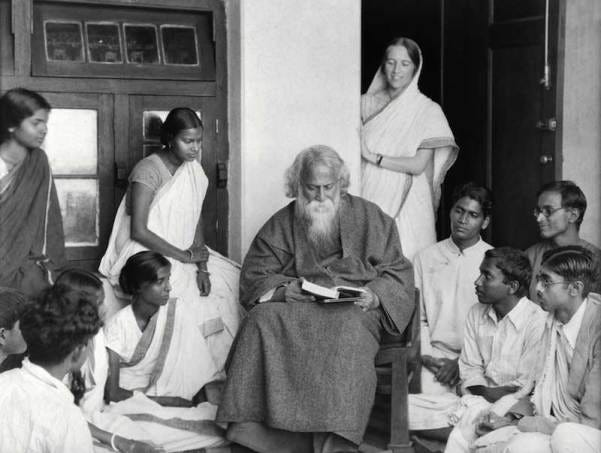Learning from Rabindranath Tagore's Santiniketan in the 21st Century | Youth INK with Network Capital
School Without Walls ... On the Cloud
Nobel Laureate Amrtya Sen recently published a memoir titled Home in the World. The third chapter in the book is Sen’s reflection of his school (Santiniketan - set up by Rabindranath Tagore) experience and the way it shaped him into the thinker we know and revere today. He mentions that Santiniketan was fun in a way he had never imagined. There was freedom in deciding what to do and what to focus on.
Classes in Santiniketan were held outdoors. Tagore disliked barriers in every realm of life and outdoor classes were a reflection of that belief. Amartya Sen writes, “it offered immunity from easy distraction that outdoor schooling offered us.”
Academically, Santiniketan was not too demanding. There was no pressure on test preparation. Often there were no examinations. The focus was on reflection and group discussions. Sen remembers the remarkable ease with class discussions would move from traditional Indian literature to contemporary western thought.
Despite the strong focus on conservatism at the time, Santiniketan celebrated diversity of thought, conviction and opinion. Debates were encouraged to debate, learn and unlearn through experiential learning.
Legendary film maker Satyajit Ray also studied at Santiniketan. He says,
“I consider the three years there as the most fruitful of my life…Santiniketan opened my eyes for the first time to the splendors of Indian and Far Eastern art. Until then I was completely under the sway of Western art, music and literature. Santiniketan made me the combined product of East and West that I am.”
He added
“I do not think my film Pather Pachali would have been possible if I had not done my years of apprenticeship in Santiniketan. It was there, sitting at the feet of “Master-Mashai” [Nandlal Bose] that I learned how to look at nature and how to feel the rhythms inherent in nature.”
Amartya Sen’s Math Teacher
Sen wasn’t particularly interested in the standard topics of school mathematics.
“I think I can work out where a projectile would land, but I cannot get excited about this calculation,” he told one of his teachers called Jagabandhuda. He was determined to think about the nature and foundation of mathematical reasoning.
Instead of forcing Sen to adapt to the syllabus requirements, Jagabandhuda encouraged him to keep tinkering and analyzing new approaches for math problems. Sen would go to his house and sit for hours. He got tremendous support from Jagabandhuda who would look up books and articles to go deep into aspects of math that pushed his thinking.
Why Rabindranath Tagore Set up Santiniketan
Tagore’s decision to set up a new school stemmed from his own dissatisfaction with this schooling. He passionately disliked the schools he had been to and viewed the standard Indian schools with horror. Even as a child he had formed serious views on what was wrong with the education system.
Tagore wanted his school to be a place where students were free, happy and at peace. Santiniketan focused on reasoning by first principles as opposed to rote memorization. This combination of freedom and reason became the defining characteristic of Santiniketan alumni like Amartya Sen.
Tagore devoted much of his life to advancing education in India and abroad. Legend has it that when he received the telegram informing him about the Nobel Prize in Literature, he was sitting in a meeting of the school committee trying to figure out how to finance the new drains the school needed. He shared the news from Stockholm stating “Money for the drains has just been found”.
Taking Inspiration from Santiniketan
Youth INK with Network Capital is our small attempt to build a weekend learning program designed to combine freedom and reasoning among our students. We are inspired by the principles of Santiniketan and aspire to take micro-steps towards creating a learning experience focused on the founding pillars of education - reading, writing, critical thinking.
Education in the 21st century needs to be so much more than test preparation and exam hacking. Classes start on Feb 19 and we hope you enroll your child in it. By spending an hour every weekend, your child will learn to think, rethink, learn and unlearn under the supervision of distinguished faculty members and a motivated peer group.
Have a reflective week ahead!






Is this appropriate for children of all ages? How will they approach a child with dyslexia/dysgraphia? I am interested for my nearly 7 yo, please respond